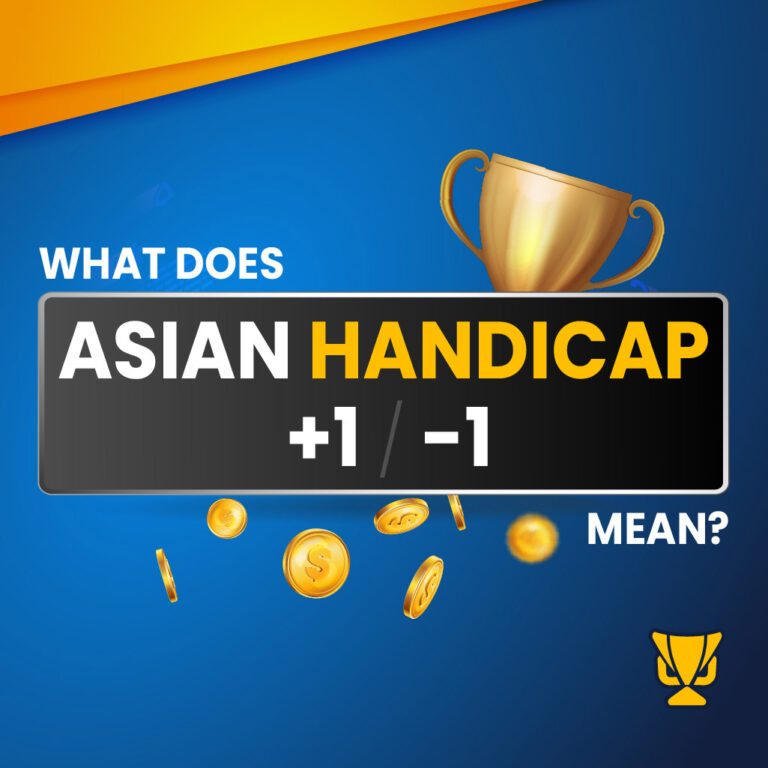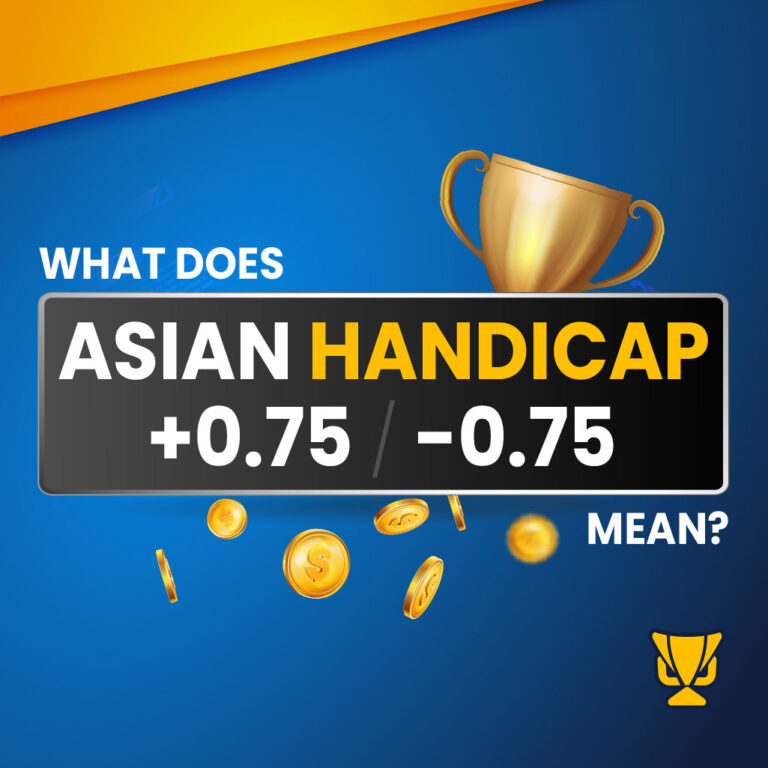What is Asian handicap in Sports Betting?

Asian handicap is a type of bet common in football and, as the name suggests, predominant in Asian markets. The concept of this bet type is to even out the odds between two teams in a match, especially where one is a clear favourite or much stronger than the other. This is done by setting a margin or score line that both teams have to cover in order for a bet to be successful.
Understanding Asian Handicap in Football
If you’ve ever visited a sportsbook before, you will have come across the various markets and odds available on different events. Betting odds aren’t calculated in formula. Instead, the bookies write up these odds based on stats such as historical performance of a team, form, financial strength, home-field advantage, player availability such as suspensions, injuries, etc. Odds are basically an expression of the probability of a team winning (or losing) a game. With decimal (European) odds representation, stronger teams get much lower values.
When a strong team, say, Manchester United, is playing against a weaker team, say, Sheffield United, it’s clear that there will be a huge difference in the odds allocated to both sides. Man U is believed to have much greater chances of winning the match and in the standard 1×2 market, may carry straight win odds as short as 1.20. The draw could be sitting somewhere around 5.50, while Sheffield could have odds as long as 8.00 or more.
The rational option for any punter would be to bet on the stronger team, but at 1.20, there is little value to be gained.
Thanks to Asian handicaps, bookies can offer bets with an almost 50:50 chance on Man U and Sheffield. Here’s a typical example of an Asian handicap:
- Manchester United -2.5 (at odds of 1.90)
- Sheffield United +2.5 (at odds of 1.95)
The above suggests that the bookmaker has chosen a margin or score line of 2.5. The negative coefficient indicates the favourite, while the positive coefficient indicates the underdog.
Reading the odds, a bet on Manchester United is successful if the team wins by more than 2.5 goals, i.e., three or more goals. On the other hand, Sheffield United has to either win the match outrightly, play a draw, or lose by no more than 2.5 goals, i.e., two goals or less.
Based on the example, it is clear that the weaker team has been given an advantage, whereas the stronger team has been given a disadvantage, or quite literally a ‘handicap,’ on the score line. At the same time, this has allowed the odds to be much closer together, allowing both bets to hold almost equal value.
Variations of Asian Handicaps
Full Lines
Asian handicap full lines use a whole number margin. For instance:
- Manchester United -1 (at odds of 1.80)
- Sheffield United +1 (at odds of 2.00)
The favourite has to win by two or more goals for your bet to succeed. If they win by one, it’s a draw. With full line Asian handicap betting, a draw is a ‘Push’, so your bet is refunded. On the other hand, the underdog bet will be successful if the team wins outright (by one or more), and you lose your bet if the team loses by two or more goals.
Half Lines
The initial example using a score line of 2.5 is a typical illustration of half lines in Asian handicapping. These margins are given on a .5 line, such as 0.5, 1.5. 2.5, etc.
For a 0.5 line, the favourite (-0.5) has to win the match, while the underdog (+0.5) has to win or draw for you to get a payout on your bet.
For a 1.5 line, the favourite has to win by two or more goals, while the underdog has to win, draw or lose by one goal.
The pattern continues as such.
Quarter Lines
Quarter lines are those with margins ending in .25 or .75. These are a bit more complicated than the rest, and they don’t cover as many outcomes as the half line. On the bright side, this allows higher payout odds.
Consider a team on the -0.25 line.
Your bet wins if the team wins the match and loses if the team loses the match. However, a draw will refund you half your stake back and be considered a partial loss. With a partial loss, you are refunded half your stake and lose the other half to the bookmaker.
Consider a team on the +0.25 line.
Your bet wins if the team wins the match and loses if the team loses the match. However, a draw will refund you half your stake back and be considered a partial win. A partial win implies you get refunded half your stake while you win returns on the other half of it – settled at the price of the odds.
Consider a team on the -0.75 line
The team has to win with two or more goals. However, if they win by 1, it’s considered a partial win. If the match ends in a draw or in an outright loss, you lose the bet.
Consider a team on the +0.75 line
The team has to win outright or draw to win. If it loses by 1, it’s considered a partial loss. The bet is unsuccessful if the team loses by 2 or more goals.
Here’s an overview:
Conclusion
You can also think of Asian handicapping as the weaker team starting off with a hypothetical goal lead and the stronger one with a goal in the negative. The greatest benefit of this bet type is that it offers statistically greater chances to win. Where a standard 1×2 market offers one in three chances, Asian handicaps allow only two chances where one team wins or the other. As such, it’s a great way to bet while having value spread out evenly between both teams.



